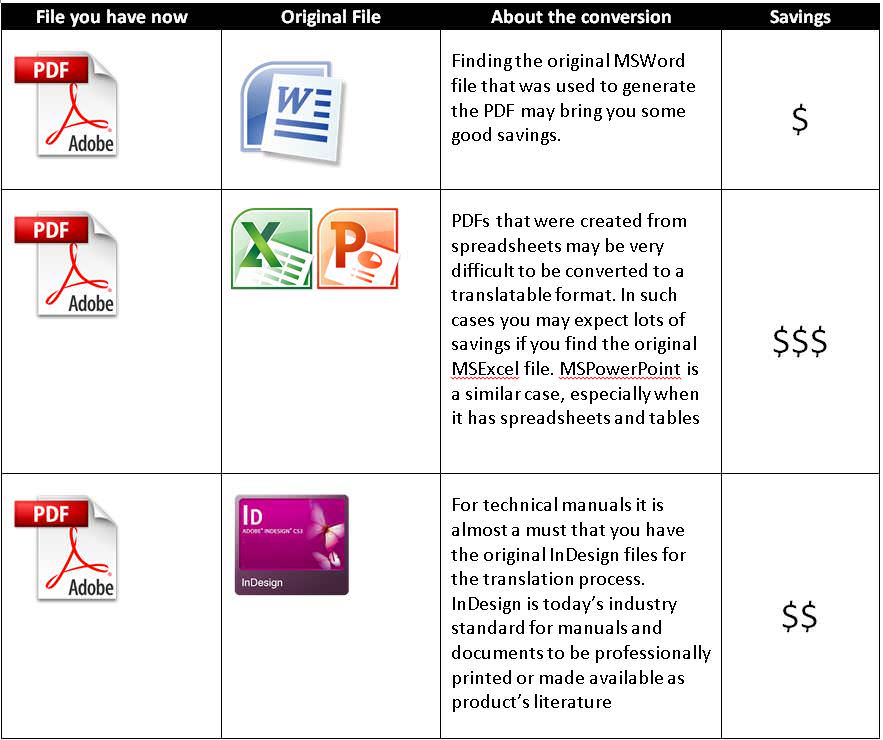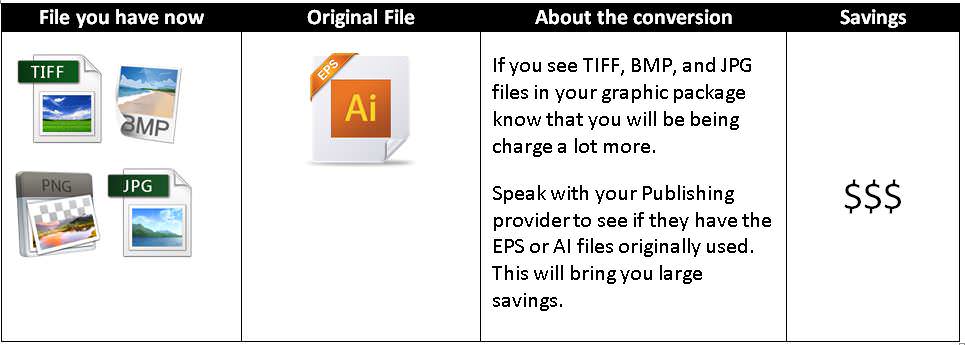Keeping a close communication with the person or area in charge of your publishing can also save you a lot. One of the most famous reasons of waste in translation is the lack of “editable graphics” sent to the translation providers. You don’t need to understand any of these technical aspects. Just make sure you provide a communication bridge between your translation provider and the party in charge of publishing your materials and you will avoid a lot of waste.
Save big by providing the right type of files
Translation companies charge for their time to convert files types when necessary.
The number one cause of extra costs related to file types are the “PDFs”. PDFs are not “editable” so they need to be converted by the translation provider in order to be used in the translation process. To make things worse this conversion is rarely 100% successful so some level of manual post-conversion adjustment may be required.
All this work, as well as a fraction of the tools being used, will be paid by YOU. Therefore, it would be in your best interest to provide the original file, which were actually used to generate the PDFs. The following table shows a few cases and what to do to save big.
Tip: some times you will be charged for this work as a separate item called “DTP”, which stands for Desktop Publishing. Other times, your translation provider will simply built-in this cost into the “per-word” rates being charged for the translation itself.
For corporate buyers of large translation projects
Although a bit too technical for the usual corporate buyer, it is important to note that the graphics usually inside of a “graphic package” should be editable as well. This situation is common for machinery manuals, educational publications, newspapers, magazines, etc.
Think about a jpg or a gif or a bmp graphic. Even the non-technical user usually knows that these formats are NOT editable. If you happen to provide this kind of graphic to your provider they will need to manually edit each one of these graphics. This is easily done with a program such as Adobe Illustrator. However, all the time spent on these editing procedures will be charged additionally to your project.
At the end of each translation project just ask for….
…your Translation Memory and Glossary.
These two things will help wonders in case you need to change providers in the future. A glossary will help the new translators to hit the ground running since they know the translations previously used for the most important technical terms.
The Translation Memory will enable the new translation provider to leverage on all the past projects completed for your company.


